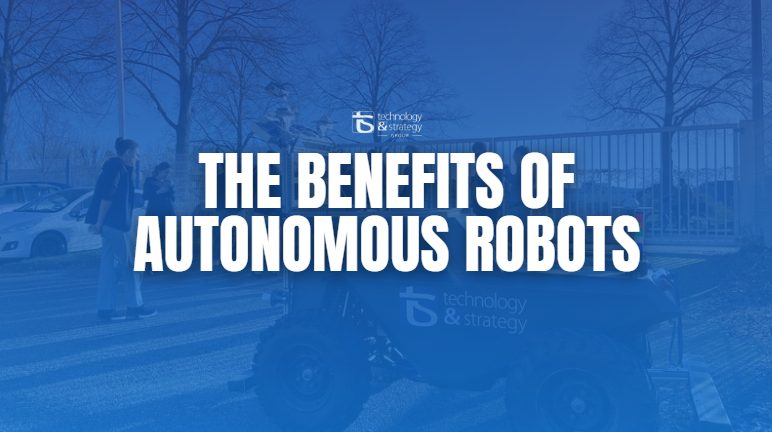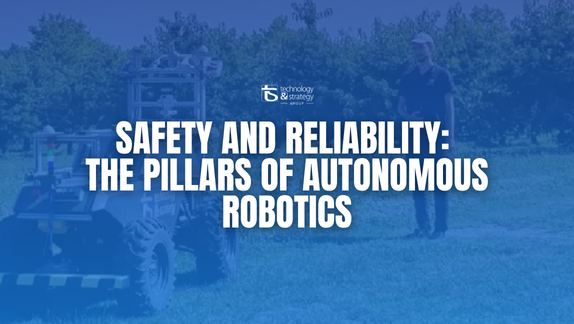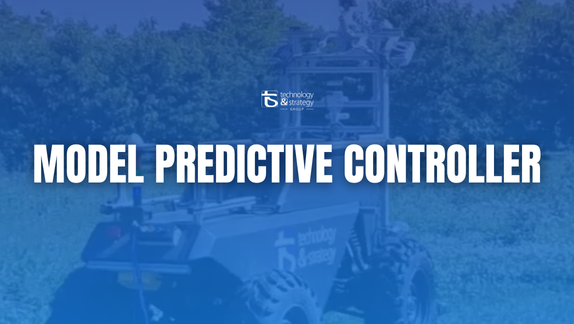For us, innovation is not limited to customer projects: it is also experienced internally, particularly through the CIFRE theses carried out by some of our employees. Florian Philippe is one of them. His career at T&S began in 2020 with an end-of-Bac+3 internship on Bosch Park Assist system testing, carried out at the Daimler test site (supervised by Maxime Lordier). In 2022, he is completing an end-of-studies internship (Master's degree) dedicated to the analysis of LiDAR data for environmental mapping and emergency braking (under the supervision of Matthias Spisser). Since October 2022, he has been working on an exciting CIFRE thesis at the intersection of robotics, artificial intelligence, and agriculture, in partnership with T&S and also supervised by Matthias Spisser. His PhD will be completed in December 2025.
It all began at the end of his end-of-studies internship at Innolab, where Florian was involved in projects related to autonomous navigation. An idea quickly took shape: what if robotics could respond to the challenges of the agricultural world?
“Why work on the safe navigation of unsupervised autonomous all-terrain vehicles in tree-covered environments? [...] The agricultural sector suffers from a lack of manpower, and the tasks are repetitive and difficult. We are seeking to address these issues through robotization.” — Florian Philippe
This led to his thesis, co-created with Matthias Spisser (T&S) and Jean-Philippe Lauffenburger (IRIMAS, EA 7499), which explored navigation solutions adapted to semi-structured environments such as orchards and vineyards. This challenge was very different from traditional road-related issues.

Florian relies on our KIPP robot, equipped with sensors: lidar, RGB-D cameras, multispectral cameras, thermal cameras, etc. The goal is to enable the robot to better understand its environment in order to decide on its future actions.
“Today, analysis tools such as LACS only take geometric information into account. [...] We are therefore looking to use other methods to take into account the nature of the elements encountered in this environment.” — Florian Philippe
His methodology is clear: combine above-ground data (plant and non-plant objects) and ground data (terrain quality) to establish the most reliable and economical route possible for the robot. This approach combines modeling, terrain, and sometimes... the unexpected.
“Anything can happen in experimentation. That's what drives us to always be vigilant.” — Florian Philippe

Among the major contributions of this thesis:
• The innovative use of multispectral cameras to detect vegetation up close, on the ground.
• The evaluation of segmentation methods not based on supervised AI, which are more robust in poorly documented contexts.
• The development of a multi-modality annotation tool to cross-reference information from different sensors.
One of the biggest obstacles encountered? The lack of public databases adapted to the agricultural world.
“While the road environment is well served, the agricultural environment clearly lacks public datasets. We often have to create them ourselves.” — Florian Philippe
At the same time, Florian and our teams had to manage the complex logistics of field trials, sometimes far away, while ensuring sufficient computing power for real-time decision-making.
Beyond autonomous navigation, one of the major contributions of agricultural robotics lies in its ability to perform regular crop inspections. Thanks to onboard sensors (multispectral cameras, thermal cameras, etc.), robots can monitor changes in plant health, detect early signs of stress or disease, and thus promote more targeted and rational interventions.
“It's not just about moving forward in a field, but understanding what's happening there. By identifying anomalies earlier, we can take local action with lighter treatments, or even avoid certain treatments altogether.” — Florian Philippe
This inspection function is fully in line with the current challenges facing the agricultural world. While the recent adoption of the Duplomb law, and in particular the conditional reintroduction of the pesticide acetamiprid, a controversial neonicotinoid, has reignited the debate on the use of inputs, robotics offers a complementary alternative: reducing chemical treatments by relying on objective and continuous data from the field.
By integrating into agricultural practices, these technologies could thus reconcile economic performance, operational efficiency, and respect for the environment, providing concrete tools for the agroecological transition.
Florian's thesis is almost complete, but it is already opening up many new possibilities, particularly in the areas of location tracking without GPS and the judicious use of artificial intelligence.
“A thesis often opens more doors than it closes.” — Florian Philippe
Florian plans to indirectly continue his work, this time by supervising a new AID thesis (supported by the Ministry of the Armed Forces), recently approved in partnership with the DRIVE laboratory in Nevers. His previous trainee, Titouan Leost, will take over with this thesis, which will focus on implementing passability analysis solutions by integrating AI modules into unstructured environments, with a concrete application in a defense context. This is a logical next step, extending the initial ambition: to make robotics useful and relevant, not only for the agricultural world, but also for sectors such as construction and defense.
The success of this thesis also relies on a stimulating ecosystem: the Innolab teams, the support of the IRIMAS laboratory, exchanges with INRAE, and collaboration with partner farmers.
“A doctoral student is never alone. The laboratory helps me to frame the research scientifically, while the company knows the market and its needs.” — Florian Philippe
This thesis perfectly embodies the spirit of our R&D Center: combining scientific rigor, practical experience, and concrete utility. It also shows how a company can be fertile ground for research by supporting projects with high societal potential.



Discover how autonomous robots developed at Englab’s R&D Center can positively impact the environment and economy through advanced and sustainable technologies.
READ MORE
Discover how Englab's R&D Center ensures the safety and reliability of autonomous robots through advanced technologies and strict protocols.
READ MORE
Discover how Englab develops a Model Predictive Controller (MPC) enabling autonomous off-road vehicles to navigate safely in complex, unstructured terrains.
READ MORE